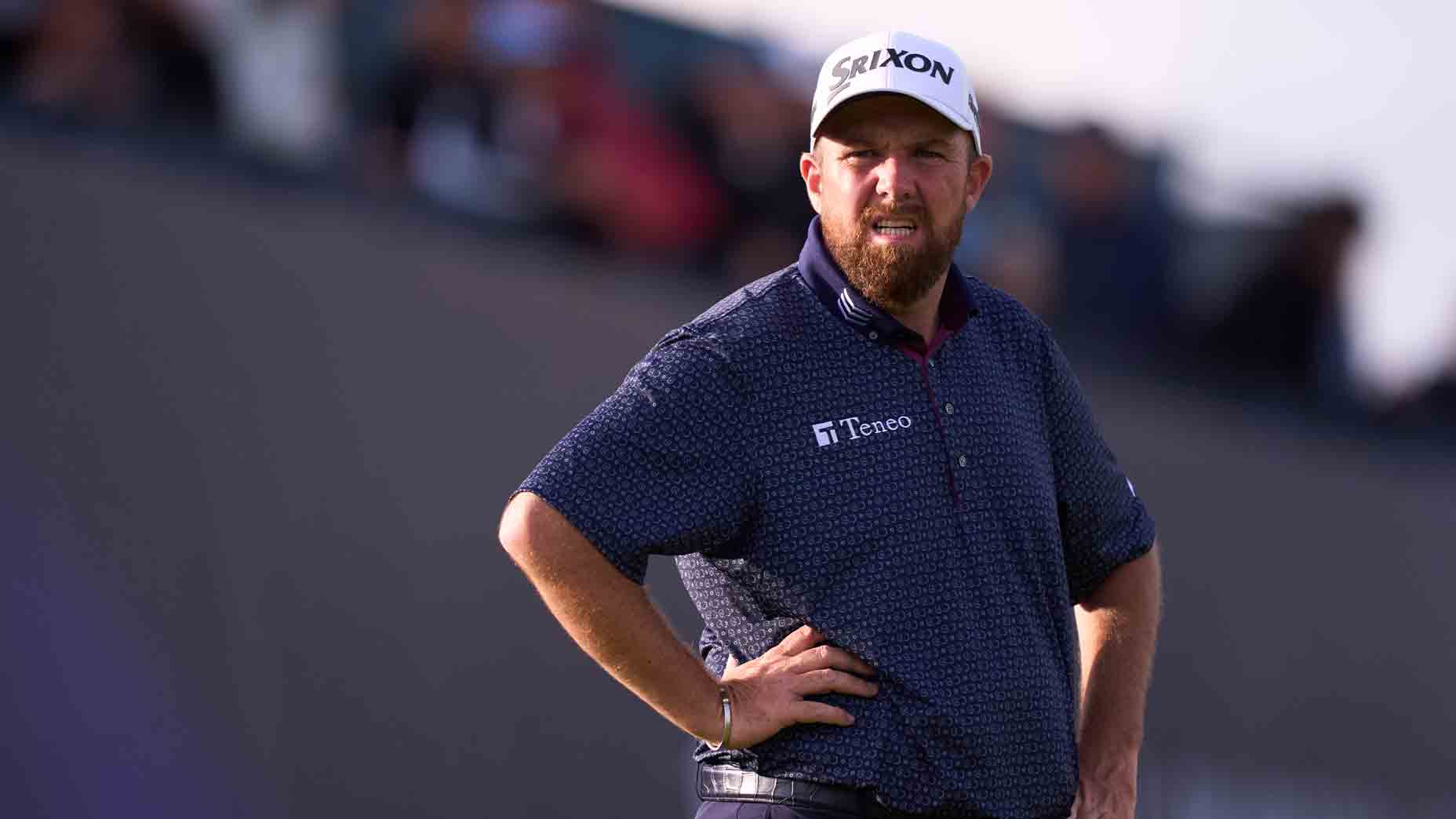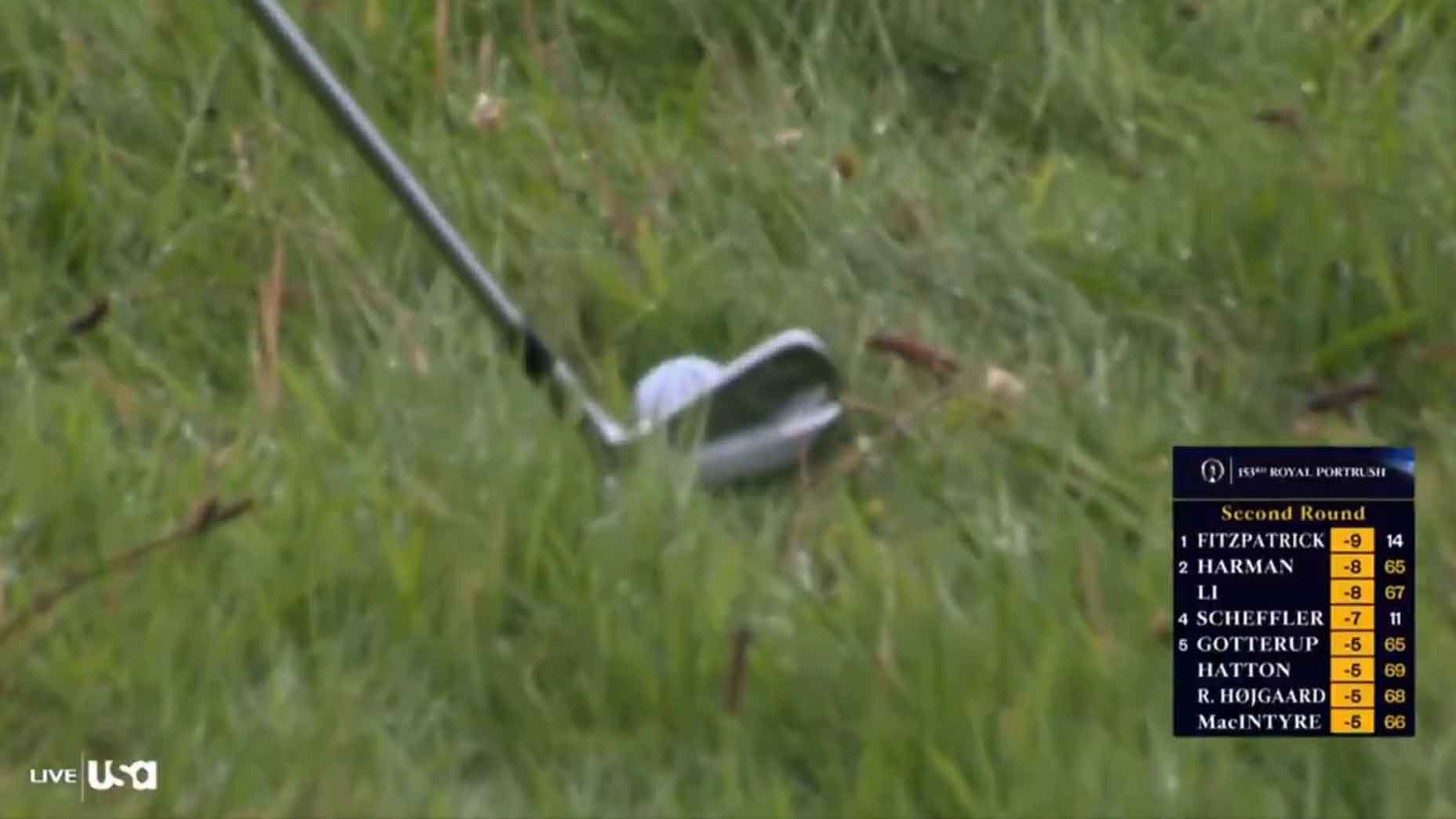The Rules of Golf are a perpetual work in progress; in fact, the USGA and R&A recently announced a slew of rules changes that will be enacted on Jan. 1. Still, no matter how many tweaks the governing bodies make, the rules book will never be perfect in every golfer’s eyes. What edits would the best players in the world make to the laws of the game? We polled some of them. Next up in this series: Tom Lehman.
Previous installments: Gary Player on putting with the flagstick in; Bernhard Langer on having to play from a divot in the fairway
***
In the second round of the 1997 Open Championship, defending champion Tom Lehman was paired with Vijay Singh. On the first green, Lehman moved his marker a few inches from its original spot so it wouldn’t interfere with Singh’s putt. Marker-moving is permitted under the rules assuming players replace their marks, which Lehman mistakenly did not. He didn’t realize the error until he had hit his tee shot on the next hole. No one else knew of Lehman’s goof — that is, until he called a two-stroke penalty on himself, turning his opening bogey into a round-wrecking triple.
The ‘worst rule ever invented,’ according to Gary PlayerBy: Alan Bastable
“I’ve been pretty penalty-free in my whole career,” Lehman said after his round. “I’ve never missed a starting time, never not signed a scorecard and never done any dumb things like that.”
Lehman may have a deep understanding and respect for the laws of the game, but that doesn’t mean he agrees with all of them.
In fact, there’s one recent rules change that he can’t wrap his head around: the 2019 amendment to Rule 17 that now allows golfers to ground their clubs in penalty areas, which, according to the rules, “are bodies of water or other areas defined by the Committee where a ball is often lost or unable to be played.” (These areas are defined by red or yellow stakes or lines.)
Lehman’s gripe?
“I think one of the difficult things in golf is in that situation is not to be able to ground your club,” he said. “You can’t really tell what kind of lie you have or how the ball is going to come out. But the minute you put your club down, it makes it a lot easier. So I think that is a terrible change.”
The USGA’s description of the rule change reads:
“There are no longer any special restrictions when a ball is in a ‘penalty area’ (the expanded designation for the area that includes what were previously called water hazards). A player is allowed to touch or move loose impediments and touch the ground with hand or club (such as grounding the club right behind the ball) for any reason, subject only to the prohibition on improving conditions for the stroke (see Rule 8.1a).”
Lehman’s not wrong. Testing the surface before a shot does make it at least marginally easier, so why would the governing bodies want to give this edge to golfers playing from penalty areas? When the rule change was announced, the USGA offered a lengthy explanation for the amendment, which is instructive to read in full:
A strict prohibition on touching or moving loose impediments or touching the ground in a water hazard has never been practical, and so a series of exceptions had to be recognized in previous Rule 13-4 (see Exception 1), Rule 12-1 and various Decisions.
This created confusion and complications in applying the Rules, such as needing to decide when a player had or had not ‘tested,’ what constituted touching ‘as a result of or to prevent falling,’ and similar questions about applying the many exceptions.
The previous prohibitions led to penalties that some viewed as overly harsh, such as:
This golf rule is unfair, according to Bernhard LangerBy: Alan Bastable
Where the breach was so inconsequential that the player could not have gained any advantage or where even a careful player could not have avoided the penalty, and in a televised competition, where the breach could not have been detected by the player or others on the course and was discovered only through later video review.
Treating a penalty area the same as the general area for these purposes simplifies the Rules, reduces confusion and eliminates unnecessary penalties.
Removing these restrictions is consistent with the purpose of a penalty area – which is not necessarily to require the player to face a more difficult challenge in playing the ball, but to address the practical need to give the player appropriate relief options because it is often difficult or impossible to play a ball from the penalty area (such as when the ball is under water).
When asked to respond to Lehman’s beef, a USGA spokesperson, in addition to providing the explanation above, also noted that it’s important for golfers to remember that the rules change applies only to penalty areas and not bunkers. “There are restrictions on grounding the club in a bunker (Rule 12), and bunkers are treated differently than penalty areas,” the spokesperson said. “The challenge of a bunker is to play from the sand so there are restrictions on touching sand in the bunker.”
By the way, if you find yourself in a penalty area and deem your ball to be unplayable, you have three options, each of which comes with one penalty stroke:
1. Stroke-and-distance relief
Where you can take it from: red and yellow penalty areas
How you do it: replay your shot from the original spot of your previous stroke
2. Back-on-the-line relief
Where you can take it from: red and yellow penalty areas
How you do it: Note the reference point of where the ball entered the penalty area. From there, go back on a line that extends straight back from the hole. You may go back as far as you like along that line. Once you have determined a spot on which to drop, the acceptable relief area extends one club length on either side of and behind that spot.
3. Lateral relief
Where you can take it from: red penalty areas only
How you do it: Identify the spot where the ball last crossed the penalty area. Drop within two club-lengths of that spot, no closer to the hole.
Latest In Instruction

Alan Bastable
Golf.com Editor
As GOLF.com’s executive editor, Bastable is responsible for the editorial direction and voice of one of the game’s most respected and highly trafficked news and service sites. He wears many hats — editing, writing, ideating, developing, daydreaming of one day breaking 80 — and feels privileged to work with such an insanely talented and hardworking group of writers, editors and producers. Before grabbing the reins at GOLF.com, he was the features editor at GOLF Magazine. A graduate of the University of Richmond and the Columbia School of Journalism, he lives in New Jersey with his wife and foursome of kids.











